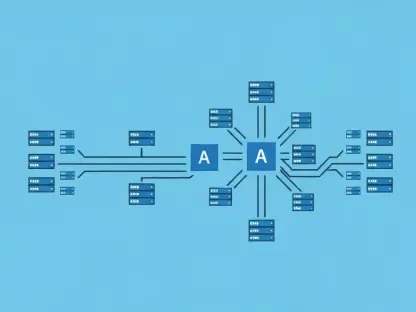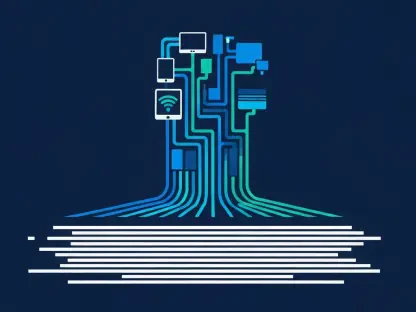As digital threats continue to evolve in complexity and frequency, outdated cybersecurity approaches increasingly fall short in keeping organizations secure. Traditional vulnerability management, which often relies on static reports and reactive measures, struggles to effectively address the dynamic nature of modern cyber threats. Against this backdrop, Exposure Assessment Platforms (EAPs) have emerged as a revolutionary technology, offering real-time risk assessments and proactive threat management, akin to how GPS navigation systems aid drivers in navigating the road.
The Inadequacy of Traditional Methods
For years, organizations have relied on traditional vulnerability management systems to safeguard their networks. These systems typically generate static, periodic reports that detail known vulnerabilities and suggest remediation steps. However, with the rapid advancement of cyber threats, this approach is increasingly seen as insufficient. Static reports quickly become outdated, and security teams often find themselves buried under an avalanche of alerts, many of which lack context or prioritization. This results in overwhelmed security personnel, who must sift through massive amounts of data to identify and address the most critical threats.
The limitations of this outdated approach are stark. Traditional methods are reactive, responding to vulnerabilities after they have been discovered, rather than anticipating and preventing potential threats. This gap can be detrimental, particularly in the face of zero-day vulnerabilities and fast-moving exploits that can cause significant damage before they are even identified.
The Emergence of Exposure Assessment Platforms
Exposure Assessment Platforms represent a paradigm shift in how organizations approach cybersecurity. These sophisticated tools continuously monitor and assess an organization’s environment, dynamically adjusting risk scores based on real-time data. By integrating seamlessly with existing security systems, EAPs offer a unified view of an organization’s threat landscape, providing clear, actionable insights that prioritize critical risks.
One of the key advantages of EAPs is their ability to adapt to new vulnerabilities, threat intelligence, and business contexts in real-time. Unlike traditional methods, which rely on periodic updates, EAPs offer continuous assessments, ensuring that security teams have the most up-to-date information at their fingertips. This dynamic risk scoring allows organizations to allocate their resources more effectively, focusing on the most severe threats first.
A Strategic Approach to Risk Management
EAPs enable a strategic transformation of cybersecurity practices, shifting the focus from a defensive posture to proactive risk management. By providing a continuous, real-time view of an organization’s security posture, EAPs empower security teams to anticipate and mitigate threats before they can cause harm. This proactive approach is crucial in addressing zero-day vulnerabilities and fast-moving exploits, which traditional methods often struggle to handle.
Furthermore, the integration of prioritized remediation guidance and automated response workflows within EAPs streamlines the process of addressing vulnerabilities. Security teams can leverage these automated processes to quickly and efficiently respond to threats, reducing the risk of breaches and minimizing the potential impact of cyber attacks. This shift not only enhances an organization’s security posture but also allows security professionals to focus on strategic priorities, rather than getting bogged down by manual, time-consuming tasks.
Bridging the Gap in Cybersecurity Visibility
A growing trend in the cybersecurity landscape is the increasing need for visibility at the executive level. Despite the critical importance of cybersecurity, many organizations still lack real-time visualization of cyber risks. Studies indicate that only 27% of organizations have mature capabilities in this regard, leaving a significant gap in their ability to effectively manage and communicate security risks.
Exposure Assessment Platforms address this challenge by providing clear, contextual insights that highlight an organization’s security posture comprehensively. These insights are accessible to both technical teams and executives, enabling better decision-making and fostering a culture of security awareness at all levels of the organization. By making complex cybersecurity data more understandable and actionable, EAPs help bridge the gap between technical security teams and executive leadership.
The Future of Exposure Assessment Platforms
Looking ahead, the future of Exposure Assessment Platforms is poised for further evolution. These platforms are expected to transform into predictive engines that not only identify risks but also recommend action plans and trigger automated remediation processes. Much like the functionality of self-driving cars, this evolution will reduce the burden on security teams, allowing them to focus on strategic initiatives rather than routine tasks.
The transition to predictive capabilities will empower organizations to stay one step ahead of potential threats, enhancing their overall security posture. By leveraging advanced analytics and machine learning, EAPs will be able to anticipate emerging threats and suggest preemptive measures to mitigate them. This forward-looking approach will be instrumental in helping organizations navigate the increasingly complex cyber terrain securely and confidently.
Transforming Cybersecurity into a Strategic Function
As digital threats grow in complexity and frequency, outdated cybersecurity methods increasingly fail to protect organizations effectively. Traditional vulnerability management, which often depends on static reports and reactive measures, falls short when dealing with the fast-changing landscape of modern cyber threats. In this context, Exposure Assessment Platforms (EAPs) have emerged as a game-changing technology, offering real-time risk assessments and proactive threat management. These platforms work similarly to how GPS navigation systems assist drivers in navigating the roads, providing timely, accurate information to help organizations stay ahead of potential attacks. EAPs continuously monitor the cybersecurity landscape, identifying vulnerabilities and assessing their potential impact. This approach enables organizations to prioritize threats and address them promptly, enhancing their overall security posture. As EAPs continue to evolve, they represent a crucial advancement in the ongoing battle against increasingly sophisticated cyber threats.









